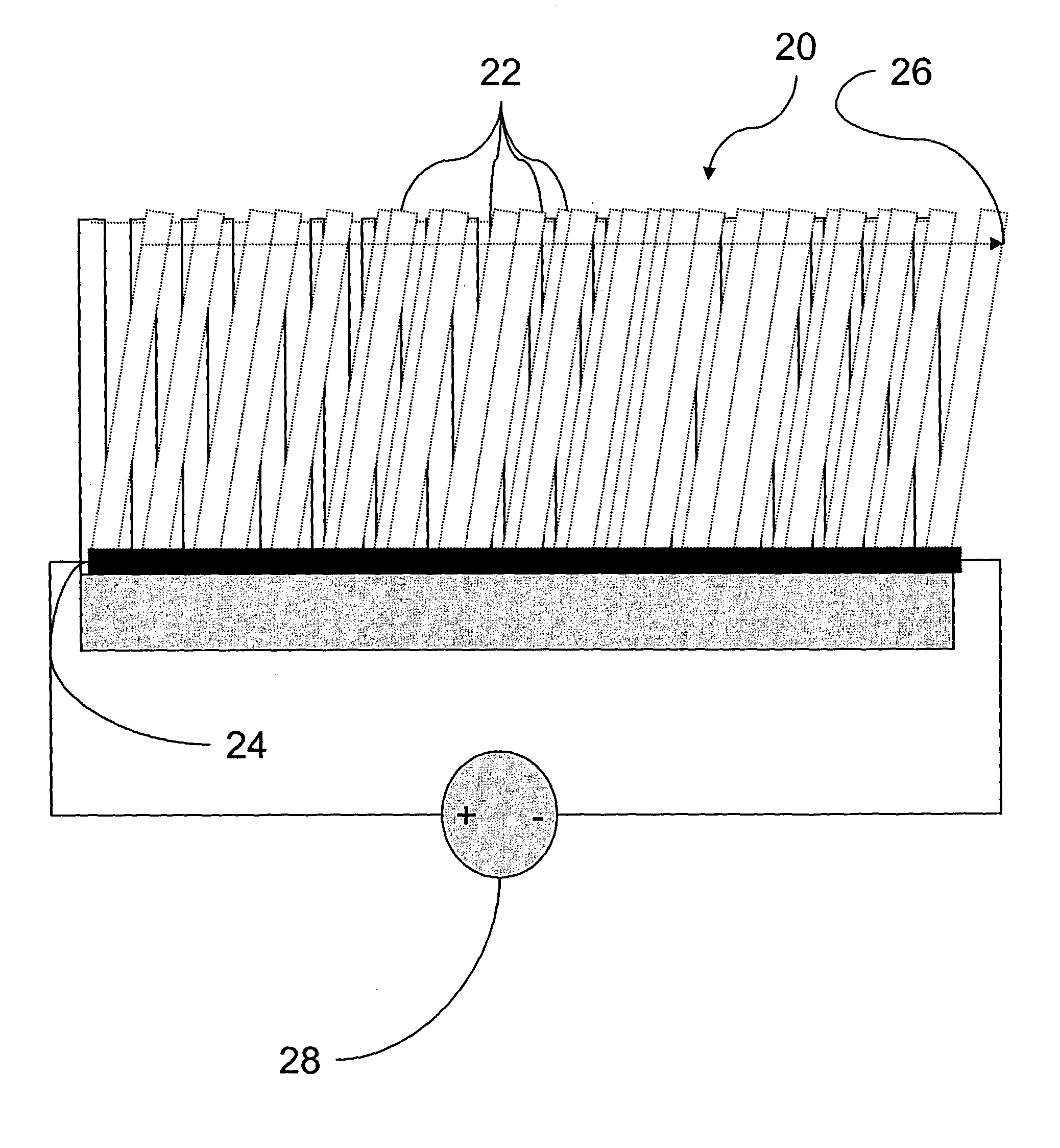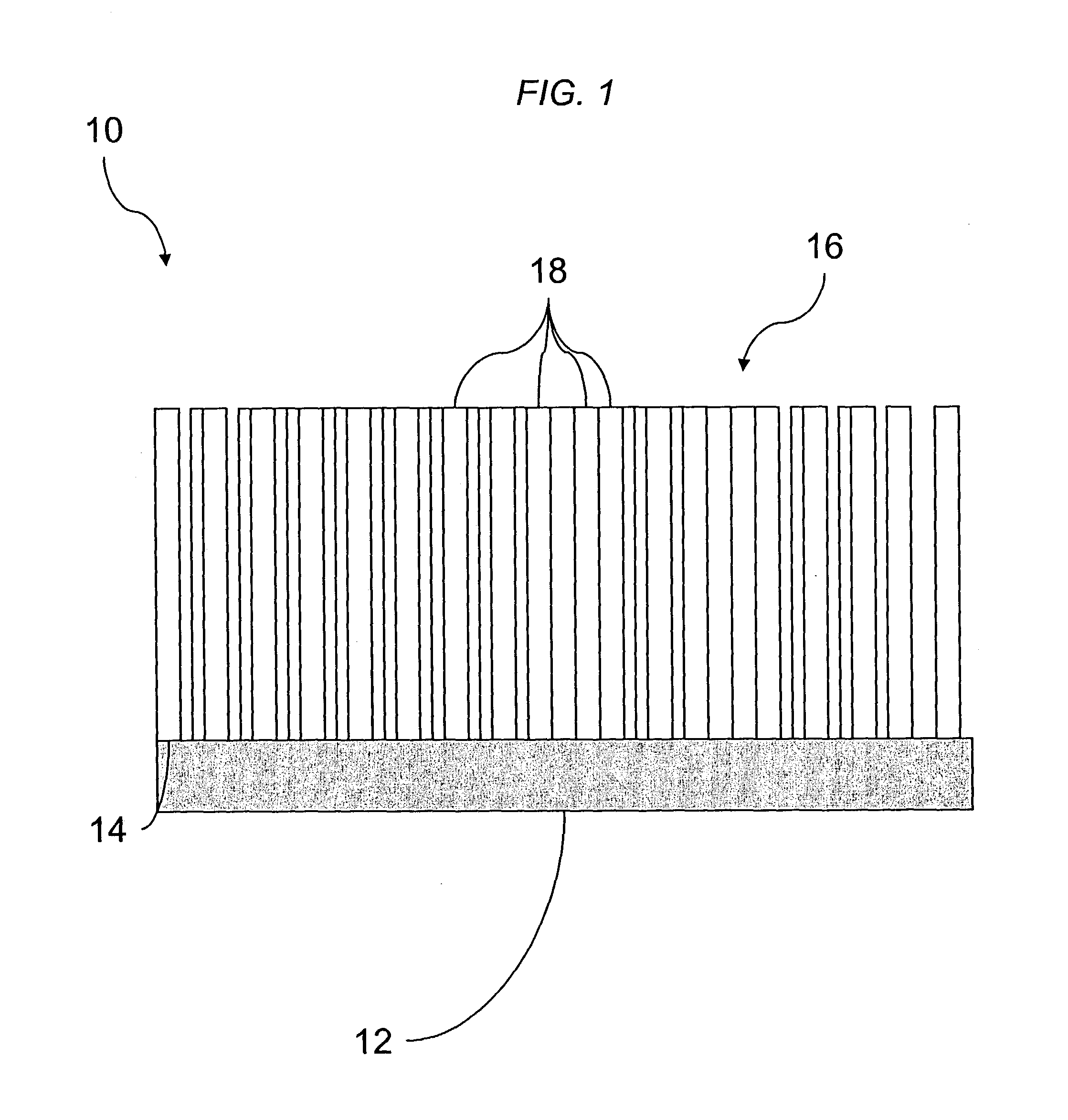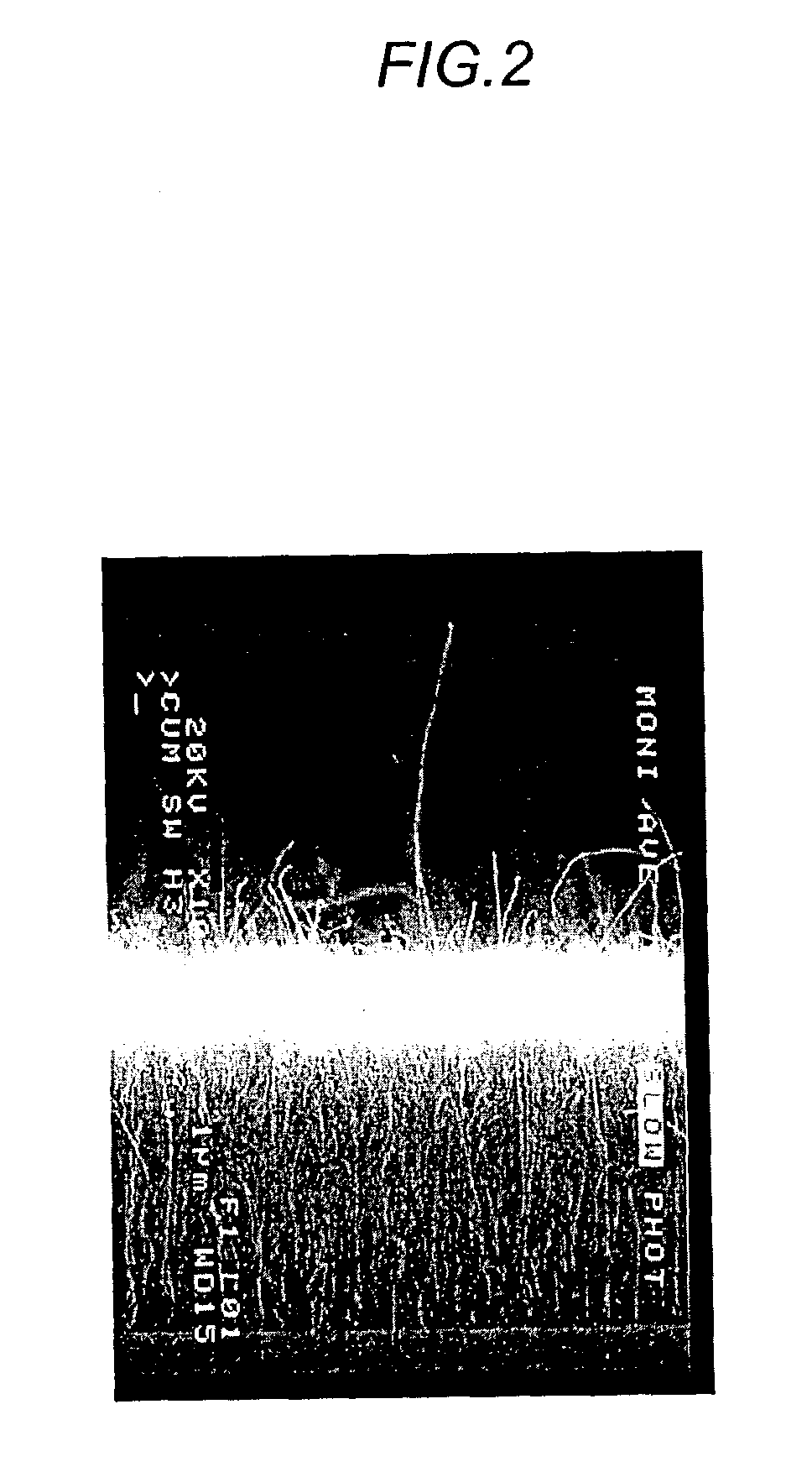Nanocarpets for trapping particulates, bacteria and spores
a nanocarpet and particulate technology, applied in the direction of electrostatic separation details, diaphragms, electrostatic lysis, etc., can solve the problems of ineffective real-time detectors, inability to achieve, and devices may miss all the other particulates of interest present in the environmen
- Summary
- Abstract
- Description
- Claims
- Application Information
AI Technical Summary
Benefits of technology
Problems solved by technology
Method used
Image
Examples
Embodiment Construction
[0034]The present invention is directed to a nanofeature particulate trap comprising a plurality of densely packed nanofeatures, such as nanotubes. The invention is also directed to a particulate detector incorporating the nanofeature particulate trap. These devices will be collectively referred to as nanotraps herein.
[0035]As shown in FIG. 1, in the most basic embodiment the nanotrap device 10 according to the invention generally comprises a substrate 12, having a growth surface 14 that can additionally be coated with a catalyst to encourage nanofeature growth. A layer 16 of densely packed nanofeatures capable of entrapping particulates of less than 10 microns is then grown on top of the growth surface of the substrate. In the embodiment shown in FIG. 1, the nanofeatures comprise a plurality of nanotubes 18 arranged such that the nanotubes originate and grow normal to the growth surface. Side and top view micrographs of exemplary nanotube nanotraps are shown in FIGS. 2 and 3.
[0036]...
PUM
| Property | Measurement | Unit |
|---|---|---|
| diameter | aaaaa | aaaaa |
| Young's modulus | aaaaa | aaaaa |
| surface-to-volume ratio | aaaaa | aaaaa |
Abstract
Description
Claims
Application Information
 Login to View More
Login to View More - R&D
- Intellectual Property
- Life Sciences
- Materials
- Tech Scout
- Unparalleled Data Quality
- Higher Quality Content
- 60% Fewer Hallucinations
Browse by: Latest US Patents, China's latest patents, Technical Efficacy Thesaurus, Application Domain, Technology Topic, Popular Technical Reports.
© 2025 PatSnap. All rights reserved.Legal|Privacy policy|Modern Slavery Act Transparency Statement|Sitemap|About US| Contact US: help@patsnap.com



